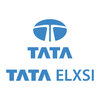
i
Tech
Mahindra
Filter interviews by
Tech Mahindra Design Engineer Interview Questions and Answers
13 Interview questions
Plastic is widely used in automobiles for its lightweight, durability, and cost-effectiveness, enhancing performance and design.
Lightweight: Reduces overall vehicle weight, improving fuel efficiency. Example: Plastic bumpers.
Corrosion Resistance: Plastics do not rust, enhancing longevity. Example: Plastic fuel tanks.
Cost-Effective: Lower production costs compared to metals. Example: Interior trim components.
Design...
Designing a car involves multiple stages from concept to production, ensuring functionality, safety, and aesthetics.
1. Concept Development: Brainstorming ideas and defining the target market.
2. Design Specification: Creating detailed requirements for performance, safety, and aesthetics.
3. Sketching and Modeling: Developing initial sketches and 3D models to visualize the design.
4. Prototyping: Building a prototype ...
Creating drawings for car parts involves design, modeling, and documentation processes to ensure precision and functionality.
1. Conceptual Design: Start with sketches and ideas based on requirements.
2. CAD Modeling: Use software like SolidWorks or AutoCAD to create 3D models.
3. Engineering Analysis: Perform simulations to test strength and functionality.
4. Technical Drawings: Generate detailed 2D drawings with dim...
The development process for creating plastic parts involves design, prototyping, testing, and production phases.
1. Conceptual Design: Initial sketches and CAD models are created to visualize the part.
2. Material Selection: Choosing the right type of plastic (e.g., ABS, Polycarbonate) based on properties needed.
3. Prototyping: Creating a prototype using methods like 3D printing to test form and fit.
4. Testing: Eval...
What people are saying about Tech Mahindra






Common defects in plastic parts include warping, sink marks, and surface blemishes, affecting functionality and aesthetics.
Warping: Distortion due to uneven cooling, often seen in large parts like automotive panels.
Sink Marks: Indentations caused by uneven material thickness, common in thick-walled components.
Surface Blemishes: Scratches or blemishes on the surface, affecting the visual quality of consumer product...
The 321 principle is a design principle that involves prioritizing features based on their importance and impact.
3 - Must-have features that are essential for the product
2 - Should-have features that are important but not critical
1 - Nice-to-have features that are desirable but not necessary
Prioritizing features based on their impact on the overall design and user experience
Factors to consider when designing components for sheet metal and plastic
Material selection based on properties and application requirements
Design for manufacturability to ensure ease of production and cost-effectiveness
Consideration of material thickness and bending radius for sheet metal components
Wall thickness, draft angles, and rib design for plastic components
Integration of features like fastening methods, m...
Experienced Design Engineer with 3 years in NX UG, focusing on innovative design solutions and efficient project execution.
Utilized NX UG for 3D modeling and design of complex components, improving design accuracy by 20%.
Collaborated with cross-functional teams to develop prototypes, leading to a 15% reduction in time-to-market.
Conducted design reviews and implemented feedback, enhancing product functionality and ...
Casting process involves pouring molten metal into a mold to create a desired shape. Sheet metal is metal formed into thin, flat pieces. GD&T stands for Geometric Dimensioning and Tolerancing.
Casting process involves melting metal and pouring it into a mold to create a specific shape.
Sheet metal is metal that has been formed into thin, flat pieces, often used in manufacturing for various applications.
GD&T is a sys...
The working principle refers to the fundamental concept or theory behind how a particular system or device operates.
It explains the underlying mechanism or process that enables the system to function.
Understanding the working principle is essential for designing and troubleshooting.
Examples include the working principle of a combustion engine, a solar panel, or a hydraulic system.
Tech Mahindra Design Engineer Interview Experiences
26 interviews found
I appeared for an interview in Mar 2025, where I was asked the following questions.
- Q1. What is the development process for creating plastic parts?
- Ans.
The development process for creating plastic parts involves design, prototyping, testing, and production phases.
1. Conceptual Design: Initial sketches and CAD models are created to visualize the part.
2. Material Selection: Choosing the right type of plastic (e.g., ABS, Polycarbonate) based on properties needed.
3. Prototyping: Creating a prototype using methods like 3D printing to test form and fit.
4. Testing: Evaluatin...
- Q2. What are the stages involved in designing a car?
- Ans.
Designing a car involves multiple stages from concept to production, ensuring functionality, safety, and aesthetics.
1. Concept Development: Brainstorming ideas and defining the target market.
2. Design Specification: Creating detailed requirements for performance, safety, and aesthetics.
3. Sketching and Modeling: Developing initial sketches and 3D models to visualize the design.
4. Prototyping: Building a prototype to te...
- Q3. What are the reasons for using plastic in automobile manufacturing?
- Ans.
Plastic is widely used in automobiles for its lightweight, durability, and cost-effectiveness, enhancing performance and design.
Lightweight: Reduces overall vehicle weight, improving fuel efficiency. Example: Plastic bumpers.
Corrosion Resistance: Plastics do not rust, enhancing longevity. Example: Plastic fuel tanks.
Cost-Effective: Lower production costs compared to metals. Example: Interior trim components.
Design Flex...
- Q4. What are the common defects found in plastic parts?
- Ans.
Common defects in plastic parts include warping, sink marks, and surface blemishes, affecting functionality and aesthetics.
Warping: Distortion due to uneven cooling, often seen in large parts like automotive panels.
Sink Marks: Indentations caused by uneven material thickness, common in thick-walled components.
Surface Blemishes: Scratches or blemishes on the surface, affecting the visual quality of consumer products.
Sho...
- Q5. What is the process for creating drawings for car parts?
- Ans.
Creating drawings for car parts involves design, modeling, and documentation processes to ensure precision and functionality.
1. Conceptual Design: Start with sketches and ideas based on requirements.
2. CAD Modeling: Use software like SolidWorks or AutoCAD to create 3D models.
3. Engineering Analysis: Perform simulations to test strength and functionality.
4. Technical Drawings: Generate detailed 2D drawings with dimensio...
Normal aptitude Questions
(2 Questions)
- Q1. Explain yourself and what work have u done
- Ans.
I am a passionate Design Engineer with experience in product development and innovative design solutions across various industries.
Worked on a team to design a lightweight, ergonomic handheld device for medical diagnostics, improving user comfort and efficiency.
Led a project to redesign a consumer electronics product, resulting in a 20% reduction in manufacturing costs while enhancing functionality.
Utilized CAD softwar...
- Q2. How will you be useful for this org
Interview Preparation Tips
(2 Questions)
- Q1. Foundation brakes
- Q2. Working principle
- Ans.
The working principle refers to the fundamental concept or theory behind how a particular system or device operates.
It explains the underlying mechanism or process that enables the system to function.
Understanding the working principle is essential for designing and troubleshooting.
Examples include the working principle of a combustion engine, a solar panel, or a hydraulic system.
I applied via Job Portal and was interviewed in Mar 2024. There was 1 interview round.
(2 Questions)
- Q1. What is k factor & y factor
- Ans.
K factor and Y factor are parameters used in sheet metal bending to calculate the bend allowance and bend deduction.
K factor is the ratio of the neutral axis to the material thickness in a bend.
Y factor is the ratio of the inside radius of the bend to the material thickness.
K factor is used to calculate bend allowance, while Y factor is used to calculate bend deduction.
Both factors are important in determining the fina...
- Q2. What is your roles and responsibility in current company
Interview Preparation Tips
I applied via Approached by Company

(2 Questions)
- Q1. Questions regarding different CAD softwares
- Q2. Questions regarding automobile parts
(1 Question)
- Q1. Designing of different Parts in UG NX
- Ans.
Designing of different parts in UG NX
UG NX is a computer-aided design software used for designing various parts
Designing parts in UG NX involves creating 3D models, defining dimensions, and adding features
The software offers a wide range of tools and features for efficient part design
Examples of parts that can be designed in UG NX include mechanical components, electrical enclosures, and consumer products
Interview Preparation Tips
Skills evaluated in this interview
I applied via Referral and was interviewed in Nov 2023. There was 1 interview round.
(2 Questions)
- Q1. What is gd&t and what is the use of gd&t
- Ans.
GD&T stands for Geometric Dimensioning and Tolerancing. It is a system for defining and communicating engineering tolerances.
GD&T is a symbolic language used on engineering drawings to specify the allowable variations in form, size, and orientation of features.
It helps to ensure that parts and assemblies will fit together and function properly.
GD&T uses symbols such as concentricity, flatness, perpendicularity, and pos...
- Q2. Explain about 321 principle
- Ans.
The 321 principle is a design principle that involves prioritizing features based on their importance and impact.
3 - Must-have features that are essential for the product
2 - Should-have features that are important but not critical
1 - Nice-to-have features that are desirable but not necessary
Prioritizing features based on their impact on the overall design and user experience
Interview Preparation Tips
Skills evaluated in this interview
(1 Question)
- Q1. Which part they will give you for remastering?
- Ans.
Remastering involves enhancing existing designs for improved functionality and aesthetics, focusing on user needs and modern standards.
Evaluate the current design for usability issues, such as a medical device that may need ergonomic adjustments.
Incorporate modern materials for durability, like using carbon fiber in aerospace components.
Update the design to meet current safety standards, such as revising a consumer pro...
Interview Preparation Tips
I applied via Recruitment Consulltant and was interviewed in May 2023. There were 2 interview rounds.

(4 Questions)
- Q1. 1] Creating 3d model. 2] WHAT IS CASTING PROCESS 3] WHAT IS SHEET METAL 4] GD&T
- Ans.
Casting process involves pouring molten metal into a mold to create a desired shape. Sheet metal is metal formed into thin, flat pieces. GD&T stands for Geometric Dimensioning and Tolerancing.
Casting process involves melting metal and pouring it into a mold to create a specific shape.
Sheet metal is metal that has been formed into thin, flat pieces, often used in manufacturing for various applications.
GD&T is a system f...
- Q2. WHAT IS GD&T IN MECHANICAL? DESCRIBLE ALL IN DETAILS .
- Ans.
GD&T stands for Geometric Dimensioning and Tolerancing, a system used in mechanical engineering to define and communicate engineering tolerances.
GD&T is a symbolic language used on engineering drawings to specify the allowable variation in form, size, and orientation of features.
It helps ensure that parts and assemblies will fit together and function properly.
GD&T uses symbols such as squares, circles, and triangles to...
- Q3. WHICH POINTS CONSIDERED DURING CASTING FEASIBLITY?
- Ans.
Points to consider during casting feasibility include material selection, part geometry, draft angles, wall thickness, and surface finish.
Material selection - Choose a material suitable for the part's function and properties.
Part geometry - Ensure the part can be easily cast without complex shapes or undercuts.
Draft angles - Include draft angles to allow for easy removal of the part from the mold.
Wall thickness - Maint...
- Q4. UG NX COMMANDS?
- Ans.
UG NX is a software used for designing, engineering, and manufacturing products.
UG NX commands are used for creating and editing 3D models.
Some common UG NX commands include Extrude, Revolve, Fillet, and Sweep.
Commands can be accessed through the toolbar or by typing in the command line.
UG NX also has advanced features like synchronous technology for flexible editing.
Users can customize commands and create macros for r...
Interview Preparation Tips
Skills evaluated in this interview
I applied via Recruitment Consulltant and was interviewed in Dec 2022. There were 3 interview rounds.

(8 Questions)
- Q1. Walk me through your profile.
- Ans.
I am a passionate Design Engineer with expertise in product development, CAD modeling, and innovative design solutions.
Bachelor's degree in Mechanical Engineering from XYZ University.
3 years of experience in product design at ABC Corp, focusing on consumer electronics.
Proficient in CAD software like SolidWorks and AutoCAD, having designed components for a new smartphone model.
Led a team project that reduced production ...
- Q2. What are your responsibilities in your previous organisation?
- Q3. Are you aware of GD&T?
- Ans.
Yes, GD&T stands for Geometric Dimensioning and Tolerancing, a system for defining and communicating engineering tolerances.
GD&T is a system used in engineering to define and communicate tolerances for manufacturing and inspection.
It uses symbols, such as concentricity, flatness, and perpendicularity, to specify geometric characteristics of parts.
GD&T helps ensure that parts are manufactured and inspected consistently ...
- Q4. Which are the operations performed on sheet metal to increase the strength of it without changing thickness?
- Ans.
Operations like bending, folding, and crimping can increase the strength of sheet metal without changing its thickness.
Bending: This process involves bending the sheet metal along a straight line to increase its strength.
Folding: Folding the sheet metal creates multiple layers, increasing its strength.
Crimping: Crimping involves creating small indentations or folds in the sheet metal to increase its rigidity.
Rolling: R...
- Q5. Do you know modelling in CREO?
- Ans.
Yes, I am familiar with modeling in CREO, a powerful CAD software for 3D design and engineering.
Proficient in creating parametric models using CREO's robust feature-based design tools.
Experience with assembly modeling, allowing for the integration of multiple components into a single assembly.
Skilled in using advanced surfacing techniques for complex geometries, such as automotive body panels.
Familiar with simulation t...
- Q6. What are the parts that you've designed in creo and what is the application?
- Ans.
I have designed various parts in Creo for applications in automotive, aerospace, and consumer electronics industries.
Designed engine components for automotive industry
Designed aircraft structural components for aerospace industry
Designed smartphone casings for consumer electronics industry
- Q7. From your experience what are the factors that needs to be considered while designing a component for sheet metal and plastic?
- Ans.
Factors to consider when designing components for sheet metal and plastic
Material selection based on properties and application requirements
Design for manufacturability to ensure ease of production and cost-effectiveness
Consideration of material thickness and bending radius for sheet metal components
Wall thickness, draft angles, and rib design for plastic components
Integration of features like fastening methods, mounti...
- Q8. What are your salary expectations?
(2 Questions)
- Q1. What do you know about MBD?
- Ans.
MBD stands for Model-Based Design, a methodology used in engineering to develop systems using models as the primary source of information.
MBD involves creating a model of the system being designed, which can be used for simulation, verification, and automatic code generation.
It helps in reducing development time and costs by allowing engineers to test and validate designs before physical implementation.
Popular tools us...
- Q2. Do you know the symbol of position tolerance?
- Ans.
Yes, the symbol for position tolerance is a circle with a horizontal line through the middle.
The symbol for position tolerance is a circle with a horizontal line through the middle
It is used in engineering drawings to specify the allowable deviation in the location of a feature
Position tolerance controls the location of a feature relative to a specified datum
Interview Preparation Tips
Be generous, Interviewers are also humans and more intelligent than us.
Acknowledge the fact that you're not aware of something and let them know only what you know.
Skills evaluated in this interview
I applied via Campus Placement and was interviewed in Mar 2023. There were 3 interview rounds.
Online aptittude test - 1 hr
(1 Question)
- Q1. Introduce yourself questions on the projects that you have done questions on hobbies
(1 Question)
- Q1. Tell about yourself tell about company location behavior questions
Tech Mahindra Interview FAQs
Some of the top questions asked at the Tech Mahindra Design Engineer interview -
The duration of Tech Mahindra Design Engineer interview process can vary, but typically it takes about less than 2 weeks to complete.
Tell us how to improve this page.
Tech Mahindra Interviews By Designations
- Tech Mahindra Software Engineer Interview Questions
- Tech Mahindra Senior Software Engineer Interview Questions
- Tech Mahindra Customer Service Associate Interview Questions
- Tech Mahindra Customer Support Associate Interview Questions
- Tech Mahindra Associate Software Engineer Interview Questions
- Tech Mahindra Customer Service Executive Interview Questions
- Tech Mahindra Customer Care Executive Interview Questions
- Tech Mahindra Software Developer Interview Questions
- Show more
Interview Questions for Popular Designations
Overall Interview Experience Rating
based on 28 interview experiences
Difficulty level
Duration
Design Engineer Interview Questions from Similar Companies
Tech Mahindra Design Engineer Reviews and Ratings
based on 176 reviews
Rating in categories
|
Software Engineer
26.6k
salaries
| ₹2 L/yr - ₹11 L/yr |
|
Senior Software Engineer
22.2k
salaries
| ₹6.4 L/yr - ₹23.8 L/yr |
|
Technical Lead
12.4k
salaries
| ₹9.8 L/yr - ₹32.9 L/yr |
|
Associate Software Engineer
6.1k
salaries
| ₹1.9 L/yr - ₹5.6 L/yr |
|
Team Lead
5.3k
salaries
| ₹6.5 L/yr - ₹19 L/yr |

Infosys

Cognizant

Accenture

Wipro
- Home >
- Interviews >
- Tech Mahindra Interview Questions















